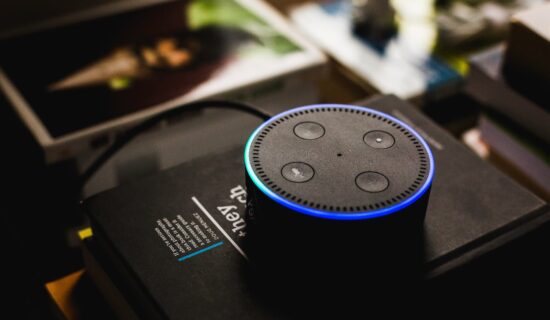Design involves the interaction between a user and a product or service, focusing on every aspect that affects the user’s perception and ease when engaging with a mobile app. This encompasses everything from the app’s colors and fonts to its interface and how these elements contribute to the user’s ability to perform desired tasks efficiently and comfortably. In the realm of online casinos, effective app design is crucial for enhancing user engagement and satisfaction. A well-designed casino app not only provides intuitive navigation and a compelling visual experience but also ensures that games run smoothly and securely on various devices. This article was written by Antonio Matias, an expert in online casino design, and is featured on his website, CasinoReal, where he shares insights on creating optimal user experiences in digital gambling platforms.
Designers aim to craft experiences through the UX
Design app that are simple, effective, logical, relevant, and enjoyable, encouraging users to continue interacting with the app.
Creating a UX
Design that ensures a positive experience for users is challenging. Designers must integrate thorough market research, development, and strategic design to deliver compelling user experiences for the company’s mobile app, as well as its products, services, and processes. They strive to bridge the gap between the company and its customers, fostering a connection that allows the brand to fully understand and meet user needs and expectations.
Skilled UX designers recognize the critical nature of adhering to UX principles, focusing on usability, logical structure, clarity, and ease of use. They also ensure the app addresses specific user problems, enhancing its desirability. Accessibility is paramount, enabling easy interaction with all app functionalities.
Significance of Adhering to UX Principles Hick’s Law
Too many choices in a mobile app can lead to decision paralysis for the user. Thus, the UX design should ideally present a limited number of options, tailored specifically to address the user’s primary concerns, streamlining their decision-making process.
- Parkinson’s Law:For an app design to be efficient and productive, its layout and instructions must be straightforward, enabling users to accomplish their tasks quickly and flawlessly.
- KISS Principle:This scientific principle, abbreviated as “Keep It Simple, Stupid,” advocates for simplicity in design. The design of the application should avoid unnecessary complexities, focusing instead on how users will interact with and integrate the app into their daily lives.
- Consistent Branding:A mobile app’s success often hinges on its visual identity, which should feature a consistent use of style, colors, fonts, and other visual elements. Consistency in icons, typography, and graphics, down to the minutest details, is crucial.
- Color Theory:Color theory is an essential part of the app’s style guide. This set of guidelines helps designers develop effective color schemes that not only enhance the app’s aesthetic appeal but also distinguish it in the competitive market, giving the app a distinct identity that attracts users. If these UX principles are correctly implemented, the app’s design will facilitate a productive and smooth user experience while reducing cognitive load. Cognitive load refers to the mental strain users face when interacting with an app. Minimizing this is crucial to ensure that users find the app enjoyable and can use it efficiently.
iOS vs. Android
The longstanding rivalry between Android and Apple is reflected in their distinct approaches and stringent guidelines for their respective platforms. Both ecosystems offer extensive design guidelines to aid in the creation of aesthetically pleasing and functional apps, yet the design process for iOS apps tends to be more stringent than for Android. Designers must be particularly mindful of Apple’s specific rules when crafting iOS app designs.
A critical consideration is the difference in device resolutions between these platforms, which can significantly impact an app’s visual presentation. Designers need to be aware of the resolutions they are working with to ensure the app is responsive and looks good on all devices. And the main thing that on the mobile version is easy to play online casino, as always at hand phone, but for starters we recommend that you start playing in casinos with a minimum deposit of 1 euro and on the site Casinoreal you can choose for yourself casino 1 euro.

Fashion App Design and Development
The relentless pace of technological advancement continues to push the boundaries of digital technology, posing challenges and opportunities in fashion app design. Keeping abreast of the latest trends is crucial as designers strive to create compelling apps that stand out in a highly competitive market. The fierce competition in the fashion app sector demands innovation and a keen understanding of market dynamics to succeed.
Staying Current with App Design
Trends Failing to keep up with the latest trends in app design can render your mobile app outdated and unappealing, hindering its performance significantly. Designers should prioritize learning the most recent techniques in app design to achieve optimal results before even beginning the design process.
Augmented Reality (AR) is shaping the future of mobile app design by enabling the creation of superior designs more practically than Virtual Reality (VR). AR is more user-friendly as it doesn’t require additional equipment like VR goggles for access.
Today’s mobile devices are equipped with the necessary hardware and software to support AR. Cutting-edge technologies like 5G and Machine Learning are also becoming mainstream, adopted by companies to craft engaging and successful app designs. Designers must ensure that their apps integrate these modern technologies smoothly to attract users who are keen on innovative features.
However, merely incorporating new trends and technologies isn’t sufficient. If the integration of these technologies into the app is too complex, users may struggle to understand or utilize these features effectively, leading to a frustrating experience.
Essential Guidelines for Developing Successful
Mobile Apps Understanding the core principles of app design, including the critical features, elements, and factors that contribute to its success, is vital. Below, we will explore specific guidelines that top app designers employ to create apps that quickly achieve recognition and popularity. These guidelines include three key steps in the app design process that are crucial for the development of a successful mobile app.
Design Applications Based on User Needs
In recent years, people have increasingly turned to their mobile devices for internet access, transitioning from traditional computers to smartphones. This shift has significantly increased mobile internet usage, with users browsing websites and downloading apps on the go. Despite the growing audience for mobile apps, these platforms have not consistently achieved the high standard of accessibility that is expected on the web. Users often report deteriorating experiences with apps, which hampers their ability to complete everyday tasks effectively.
Therefore, the most effective and successful apps are those that prioritize maximum accessibility, ensuring that users can perform their activities effortlessly and without interruption. To aid in this effort, here are six essential tips that app designers can follow to make sure the apps they develop are regarded as highly accessible by users.


